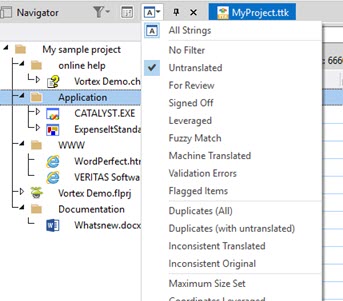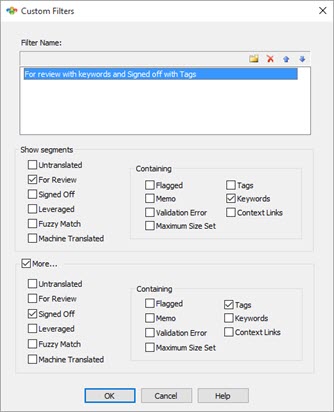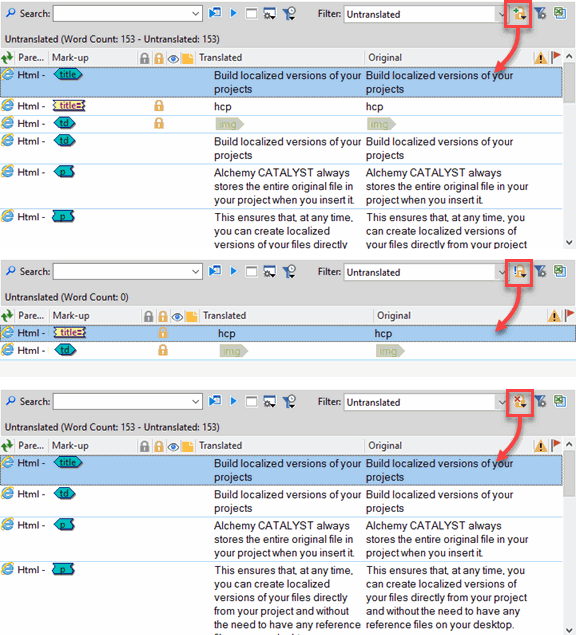
Dear Alchemy Technology user, My name is Cyril Vallin, I am the Product Support Manager at Alchemy Software Development. This TechBytes Email is to share our experiences with our users so that we can all benefit and enhance our use of Alchemy technology. With writing in-depth features and processes articles I hope to promote advancement amongst all of you, Alchemists. In this release, let look at the outcome of the overhauling of the filters and the string list in CATALYST 12. |
|
String list and Filters The string list takes centre place in Alchemy CATALYST within the Workspace window, displaying all localisable segments for the selected resource in the Navigator window, recursively. Localization engineers, Translators and Project Managers alike can then manipulate what the string list displays using Filters and the QuickFind tool. Of course none of this is new in CATALYST 12 however a major overhaul took place in order to increase the refresh rate and offer complete control over the filtering capabilities. As a result the first fundamental change is the way the Show All Strings button The button also works as a quick access to the filter list. Selecting the first entry will turn Show All Strings on or off while all the filter options are accessible below.
Already at this point, if you have been working with CATALYST 11 or older, you will have experienced a great improvement in the speed at which your string list refreshes each time you navigate through your resources. But all of you avid users wanted to have more! looking for flexibility from the filters. For example showing all strings marked for Review but excluding locked strings or listing any string with a specific status including keywords or inline tags... So we implemented the ability to create your own custom filters. Which along with the new button to Include or Exclude locked strings will allow you to filter for any criteria you can think of. Filters which you are familiar with are still available from the Filter dropdown but now include a few additions. Those are filters to list strings with Validations errors, Maximum size, Tags, Keywords or Context Links. The sought after improvements however come with the ability to build on this list creating your own custom filters. Customize yours by clicking the
Something worth mentioning at this point is that those custom filters can be saved in a User Profile. Go to FILE > Options > User profile. It's easy to share your custom filters with colleagues and vendors, or just backup. This is very useful when assigning a review or engineering task and you want to guide the user with a pre-defined filter. The Include Locks button located to the right of the filter dropdown controls if the string list (filtered or not) should include lock strings, only displays locks strings or excludes them.
For instance, while using the same filter, Untranslated, we can see the results of selecting each of the 3 different options:
To conclude this presentation of the new improved string list, let us turn our attention to the last major change. The title bar directly above the string list includes the wordcounts. Just like the string list only displays the segments matching the filter, the wordcounts broken down by status are reflecting the segments included under the active filter.
|
||
Thanks for taking the time to read this instalment of TechBytes. It has been fun to write and I hope you found some if not all of it beneficial. I always welcome new article ideas, so if there is a feature you feel works really well and is worth mentioning, or indeed if clarification on a particular topic would help you, please let me know so together we can make TechBytes as useful as possible for everyone. Remember all the previous released articles are available on our website, in the Support section. Use your Support Centre login to access all the past articles along with other resources available to our premium support members. My best wishes
|
Alchemy Software Development Ltd. | Block 2 | Harcourt Business Centre |





